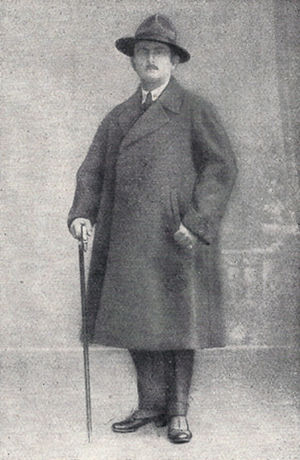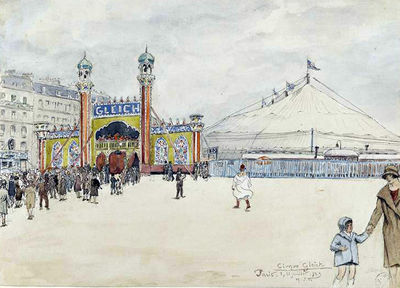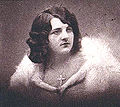Julius Gleich
From Circopedia
Circus Owner
By Raffaele De Ritis
Circus Gleich had a relatively short existence (1928-1937), but it was, in the early 1930s, one of the largest and most popular traveling circuses in Europe. It was emblematic of an era when German circuses were trying to match the gigantism of their American counterparts—a chimera that led several of them to bankruptcy.
Circus Henny
Its founder, Julius Gleich (1886-1951), was born in Austria, the son of a metal turner. He apparently entered the circus world as a musician. In the biography published later by his circus’s Press Department, it was said that he had been in the United States at a young age, where he had been exposed to the American giant three-ring circuses, and then returned to Europe, purchased a cart and two horses, and started his own business.
More historically grounded is Julius Gleich's presence in the 1910s as a bandleader in prominent traveling circuses of the era, such as the Czech Circus Kludsky or the German Circus Blumenfeld. Gleich eventually married Karola Häni (b.1894), one of the five Häni sisters, who belonged to a well-known Swiss circus family. (One of Karola's sisters, Lydia, was the mother of the augusteIn a classic European clown team, the comic, red-nosed character, as opposed to the elegant, whiteface Clown. Andreff; another, Mary, the grandmother of the augusteIn a classic European clown team, the comic, red-nosed character, as opposed to the elegant, whiteface Clown. Gaston Häni—two of the greatest Swiss clowns.)
The Häni family ran the Grand Cirque Bernois in Switzerland at the turn of 20th century; in the 1910s, it became Zirkus Blumenfeld & Hänni, and Circus Henny (the first of the name) by the end of the decade. It is at that point that Julius Gleich joined his wife’s family business; he became the director of Circus Henny in 1919. In 1922, Gleich renamed his two-pole circus, European Barnum & Bailey—with the word European in very small letters on the circus façade. About twenty years after The Greatest Show On Earth’s European tour, many German and Austrian circuses began exploiting—sometimes quite naively as demonstrated by Gleich—their audiences’ still vivid memories of that event.
The Giant Circus Gleich
In 1924 the circus finally took the name of Circus Gleich, and was soon touring with a huge four-pole big topThe circus tent. America: The main tent of a traveling circus, where the show is performed, as opposed to the other tops. (French, Russian: Chapiteau) in a "hippodrome" format. Julius Gleich was following in the footsteps of Circus Krone, which, one year earlier, had adopted the American three-ring format. Gleich, however, better adapted the system to the European taste; he used the three rings sporadically, instead presenting most of his show on an elongated hippodrome with a single ring in its center. This gave the possibility either to focus on single displays, to present multiple acts simultaneously, or to use the full hippodrome for big spectacles. (After WWII, this hybrid system was reintroduced in Germany by Franz Althoff and in Italy by the giant Togni circuses).Circus Gleich reached the apogee of its size and success between 1928 and 1933. It visited France, Spain, Italy, Yugoslavia, Hungary, Austria, and Czechoslovakia, traveling on two or three special trains, which was the usual means of locomotion for the large circuses of that era in Europe. Circuses were then a strong propaganda tool for Nazi Germany abroad, and Gleich was a Germany-based circus. In Italy, Circus Gleich presented its show in the main building of the Fiera Campionaria, Milan’s fairground, before the Fascist authorities. Pictures of the period also show Benito Mussolini presiding social gatherings in Rome inside Gleich’s big topThe circus tent. America: The main tent of a traveling circus, where the show is performed, as opposed to the other tops. (French, Russian: Chapiteau).
Even though it didn’t reach the size and menagerie content of some giant German circuses like Krone (if one is wise enough not to give too much credence to the overblown figures stated in Gleich’s publicity materials), period photographs show that Gleich’s big topThe circus tent. America: The main tent of a traveling circus, where the show is performed, as opposed to the other tops. (French, Russian: Chapiteau) could indeed hold several thousands of spectators, and its collection of animals was quite interesting, especially by today’s standards; around 1930, it travelled with about 100 horses, and a menagerie nearing 150 animals of various species.
Nonetheless, many circus reviewers at the time criticized the shabby composition of Gleich’s shows—although they often noted the spectacular equestrian and aerial displays. The signature features of Gleich’s programs were an elaborated wild-west spectacular, and one of the first regular human cannonball acts presented in Europe, whose human charge was fired from a WWI-style giant cannon. Over the years, however, some very respectable artists performed with Circus Gleich, among whom the celebrated cat trainer(English/American) An trainer or presenter of wild cats such as tigers, lions, leopards, etc. Otto Sailer-Jackson, the jockeys Ricono-Sturlas and Althoffs, the clowns Babusios, and many others. The show was accompanied by two orchestras that faced each other on opposite artist entrances and played in alternance.
The Last Of Julius Gleich’s Circuses
Like with many German circuses of the era, even the massive exploitation of foreign markets didn’t protect Gleich from the galloping German inflation. The giant Circus Gleich went bankrupt in 1934. Julius restarted a downsized version of his once-giant circus, but in 1937, his debts had reached a peak, and he was forced to close Circus Gleich in the middle of its tour, in Czechoslovakia. Gleich is also said to have suffered from losing the favors of the Nazi regime, his wife having been branded as "half-Jewish"—a plausible story considering what had happened to Jewish-owned major German circuses such as Strassburger, Lorch, and Blumenfeld.
After WWII, in 1949, Julius Gleich tried to rebuild his circus from scratch. It was a short-lived experience, interrupted in 1951 by his death at age sixty-five in Bad Münstereifel, near Bonn, in Germany. Julius Gleich’s daughter, Rosa (b.1918), had married Theo Jostmann, an equestrian director and esteemed horse trainer who worked for a long time with the Circus Barum of Margarete Kreiser. Their sons, the identical twin Berni and Theo, Jr., were seen in the 1960s training horses for several German circuses, notably Franz Althoff.
See Also
- Video: The Arrival of Circus Hanny's Animals in Amsterdam (1924)




















